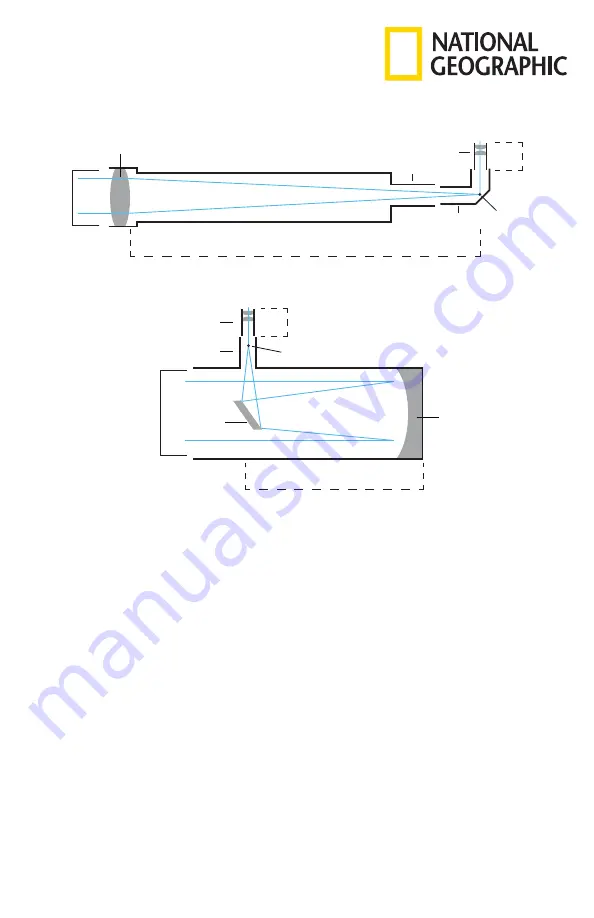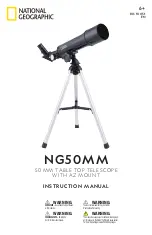
7
Aperture:
This figure, which is usually expressed in millimeters, is the diameter of a telescope’s light-gathering
surface (objective lens in a refractor or primary mirror in a reflector). Aperture is the key factor in
determining the brightness and sharpness of the image.
Objective Lens:
The objective lens is the main light-gathering component of a refractor telescope. It is actually composed
of several lens elements.
Diagonal:
This accessory houses a mirror that deflects the ray of light 90 degrees. With a horizontal telescope tube,
this device deflects the light upwards so that you can comfortably observe by looking downwards into
the eyepiece. The image in a standard diagonal mirror appears upright, but rotated around its vertical
axis (mirror image). To get an image without this rotation, you will need to use a special diagonal with an
erect image prism.
Eyepiece:
An eyepiece is an optical accessory comprised of several lens elements. It determines the magnification
of a particular observing setup.
Primary Mirror:
The primary mirror is the principle light-gathering surface of a reflector telescope.
Secondary Mirror:
A secondary mirror is a small mirror that sits at a 45° angle in relation to the primary mirror of a reflecting
telescope. Light from the primary mirror is reflected back up the tube to the secondary mirror. The light is
directed from this mirror up into the eyepiece.
Objective Lens
Aperture
(mm)
Aperture
(mm)
Eyepiece
Diagonal Focal Point
Focal Point
Focal Length Telescope
(mm)
Focal Length Telescope
(mm)
Focal Length
Eyepiece
(mm)
Focal Length
Eyepiece
(mm)
Focuser
Secondary
Mirror
Primary Mirror
(Objective)
Focuser
Eyepiece
Telescope Terms to Know:
Summary of Contents for NG50MM
Page 10: ...10 Notes ...
Page 11: ...11 Notes ...

























